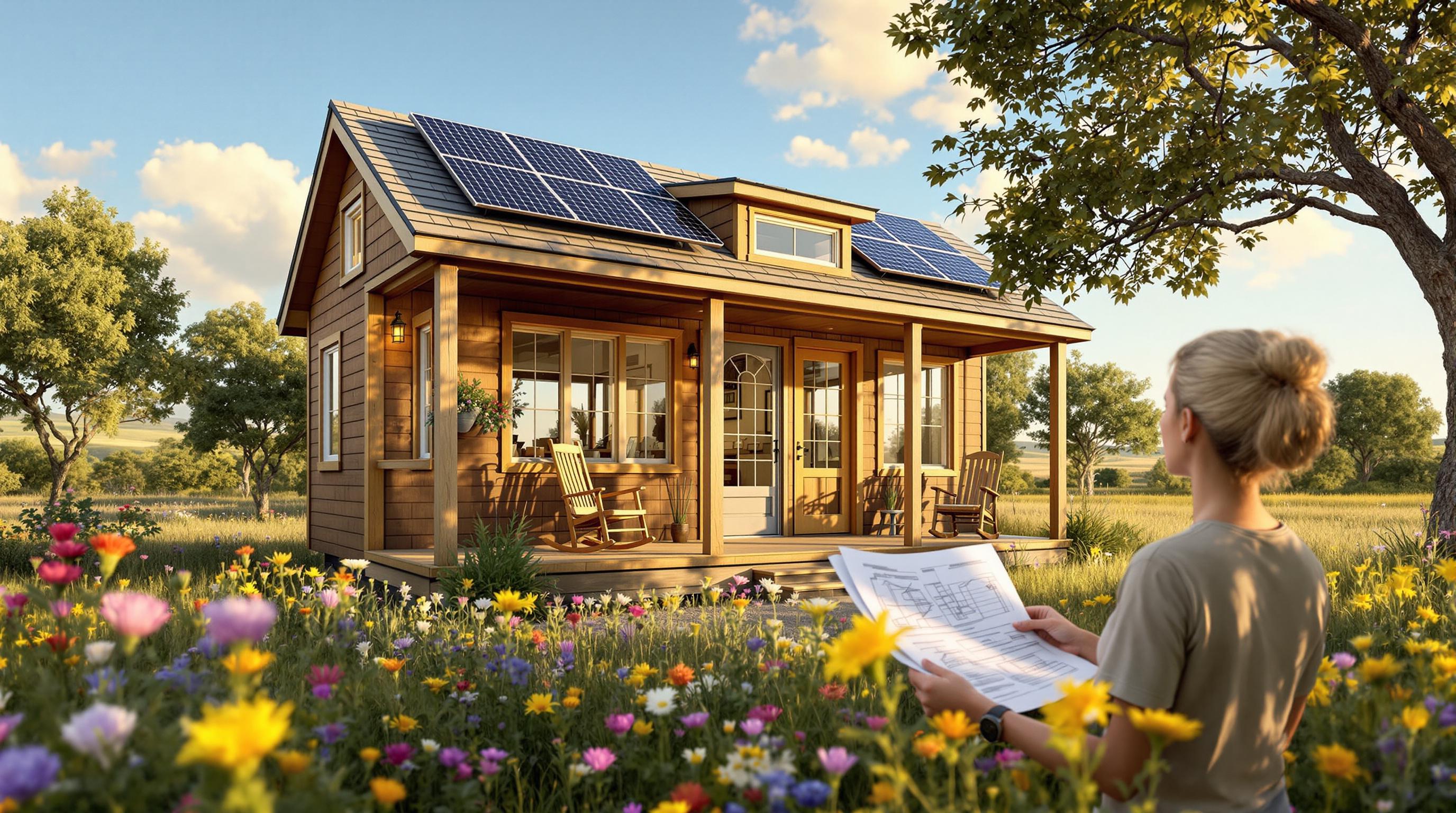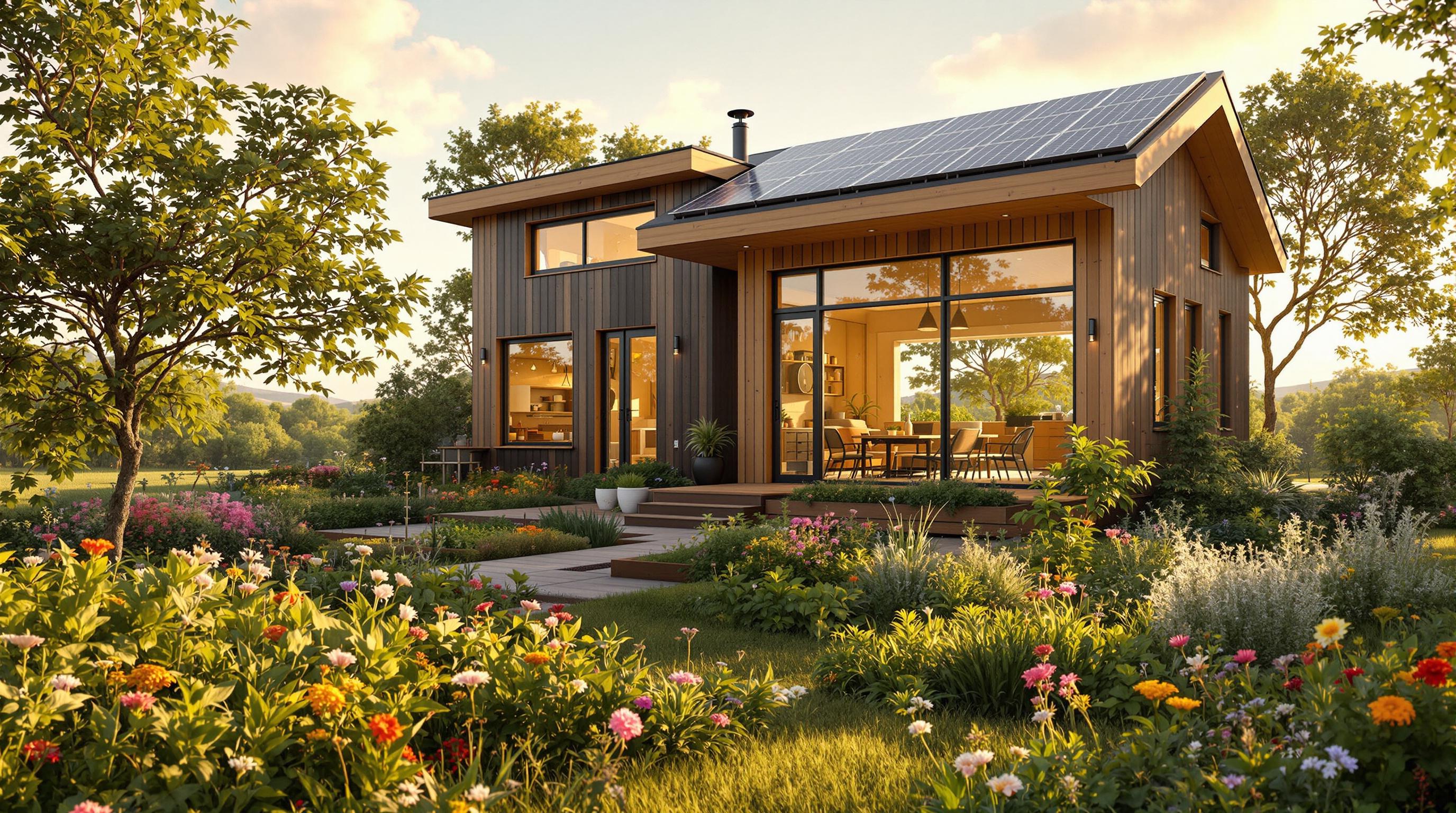The tiny house movement is reshaping housing with affordable, eco-friendly solutions. Here's what you need to know:
- Cost: Tiny homes cost between $10,000 and $40,000, compared to traditional homes averaging $320,000.
- Sustainability: Features like solar panels, reclaimed materials, and water-saving systems make them environmentally friendly.
- Space-Saving Innovations: Smart designs include multi-functional furniture and vertical layouts to maximize small spaces.
- Off-Grid Living: Advanced systems like rainwater collection and composting toilets support independent living.
- Policy Changes: Cities like Portland and Austin are updating zoning laws to allow tiny homes and ADUs, addressing housing shortages.
- Community Living: Tiny house villages offer shared resources, affordable housing, and strong community ties.
With the market projected to hit $5.8 billion by 2025, tiny homes are becoming a practical and sustainable housing option. Ready to explore this lifestyle? Dive into the latest trends and resources for tiny living.
The Top Tiny Homes Of 2023
New Trends in Tiny House Design
In 2024, tiny house designs are taking on new dimensions by combining eco-conscious choices with practical solutions. With a growing focus on sustainable living, these homes are being reimagined to fit modern needs while minimizing their environmental impact.
Eco-Friendly Materials and Smart Energy Features
Tiny houses are now built using materials like reclaimed wood, bamboo, and recycled metal. These not only help reduce waste but also bring unique character to each home.
Energy efficiency is at the forefront of these designs, with features like:
| Feature | Benefit |
|---|---|
| Solar Panels | Cuts electricity costs and lowers emissions |
| LED Lighting | Uses up to 75% less energy |
| Low-Flow Water Fixtures | Reduces water usage without sacrificing utility |
| Energy Star Appliances | Helps save power during everyday use |
Smarter Space Utilization
New designs are all about making the most of limited space. Vertical layouts and multi-functional furniture are game-changers. Think Murphy beds that turn into desks or staircases with built-in storage. These clever solutions ensure tiny homes feel both practical and comfortable.
"The tiny house movement is not just about living small; it's about living more intentionally and sustainably." - Illustrarch, 2024 [1]
Off-Grid Living Features
The pandemic has boosted interest in self-sufficient living, and tiny homes are stepping up. Many now include advanced solar setups, rainwater collection systems, composting toilets, and gray water recycling. These features allow homeowners to live independently and reduce reliance on public utilities.
Although these innovations are redefining tiny living, zoning laws and regulations remain a key factor in how widely they can be adopted.
Updates on Zoning Laws and Regulations
Tiny house regulations are evolving quickly as cities work to accommodate this increasingly popular housing option. Recent changes indicate a shift in how municipalities integrate tiny homes into their communities.
Changes in Zoning Rules
Cities across the U.S. are revising zoning codes to include tiny houses as legitimate housing options. Places like Portland and Seattle are at the forefront, updating regulations to allow tiny houses on wheels and creating specific categories for tiny house villages.
In Austin, the Tiny Home Community Initiative has built 200 homes to combat homelessness. Meanwhile, Los Angeles has made adjustments to single-family zoning laws, making it easier to construct tiny homes.
Growth of Accessory Dwelling Units (ADUs)
Accessory Dwelling Units (ADUs) are becoming a key part of urban housing strategies, especially in crowded cities. These small homes, built on existing residential properties, provide a practical way to increase housing availability.
Los Angeles has simplified ADU permitting processes, cut down barriers, and expanded affordable housing options. The growing demand for tiny homes is reflected in market projections, with Prophecy Market Insights estimating the market will reach $5.8 billion by 2025 [1].
Cities are turning to ADUs to address housing shortages while maintaining neighborhood aesthetics. For example, Olympia, Washington has demonstrated that well-planned tiny house communities can offer sustainable, community-driven living solutions while tackling urgent housing challenges.
These zoning updates are opening up new housing possibilities and supporting a shift toward more sustainable, community-focused living. Tiny house communities are stepping in as practical answers to housing shortages and more eco-friendly lifestyles.
sbb-itb-2ef3f3a
Tiny House Communities and Market Trends
Tiny House Villages and Shared Living
The tiny house movement is expanding from individual homes to entire communities. These villages combine shared resources with private spaces, offering a balance of connection and independence.
In cities like Austin, Texas, and Los Angeles, tiny house villages are emerging as creative solutions for affordable housing. These developments often include features like community gardens, workshops, and shared gathering spaces, which not only strengthen community ties but also promote efficient use of resources.
"The tiny house movement has made meaningful societal contributions, particularly in addressing homelessness and promoting sustainable living practices." - Parametric Architecture [2]
These villages are reshaping how we think about communal living, while also addressing the growing need for housing that is both affordable and eco-friendly.
Affordable Housing and Market Growth
The tiny house market is booming as more people seek affordable and eco-conscious housing options. By 2025, the industry is projected to reach $5.8 billion, fueled by trends that prioritize cost savings and sustainability [1].
One major appeal of tiny homes is their affordability - costing up to 87% less than traditional homes. This affordability, combined with environmental benefits, attracts a wide range of people, from young professionals to retirees. Communities like those in Austin and Los Angeles showcase how shared living spaces can address both affordability and environmental concerns, key factors driving the market's expansion.
Many tiny house villages incorporate features like solar panels, composting systems, and rainwater collection, offering a model for sustainable living. These communities particularly resonate with eco-conscious individuals looking for a lifestyle that combines environmental responsibility with a strong sense of community.
Resources for Tiny House Living
Tiny Houses For Sale, Rent, and More

TinyHouseSearch.com offers a wide range of listings for builders, communities, and helpful resources. It also includes zoning and building guidelines to help newcomers navigate the challenges of tiny house living.
Other websites, like Tiny House Swoon and The Tiny House Directory, provide plenty of design inspiration and connect enthusiasts through community forums.
"According to the American Tiny House Association, the tiny house movement now supports a comprehensive ecosystem of resources for sustainable living." [2]
DIY Building Kits and Guides
DIY building kits are becoming a popular choice for those looking for affordable, customizable housing options. Companies like Tumbleweed Tiny Houses and Zyl Vardo offer kits starting at $5,000, making tiny house construction more attainable for budget-conscious builders.
Earthship Biotecture focuses on sustainable building using reclaimed materials. Their DIY kits are designed for off-grid living, offering pre-made solutions that emphasize energy efficiency and independence.
| Building Option | Starting Price | Features |
|---|---|---|
| Basic DIY Kit | $5,000 | Pre-cut materials, basic plans |
| Premium Kit | $20,000 | Pre-drilled materials, detailed instructions |
| Custom Design | $30,000+ | Personalized plans, eco-friendly materials |
For those wanting extra guidance, platforms like The Tiny House Build provide workshops and training. These cover everything from laying the foundation to advanced building techniques, giving individuals the tools to confidently start their tiny house journey.
Conclusion
The tiny house movement is influencing the way we think about sustainable living. Advances in technology, community planning, and design are making tiny homes more practical and appealing. Features like smart home systems and off-grid capabilities have increased their functionality, while the rise of tiny house villages and accessory dwelling units (ADUs) shows how they can meet a variety of housing needs.
Platforms such as TinyHouseSearch.com and DIY kits from builders are helping more people join this movement. These resources simplify the process, offering support for both those building their own homes and individuals looking for ready-made options.
As technology, materials, and design continue to evolve, tiny homes are becoming an important part of the solution to modern housing challenges. By focusing on sustainability, affordability, and fostering community connections, the tiny house movement is paving the way for a more resource-conscious and inclusive approach to housing.



